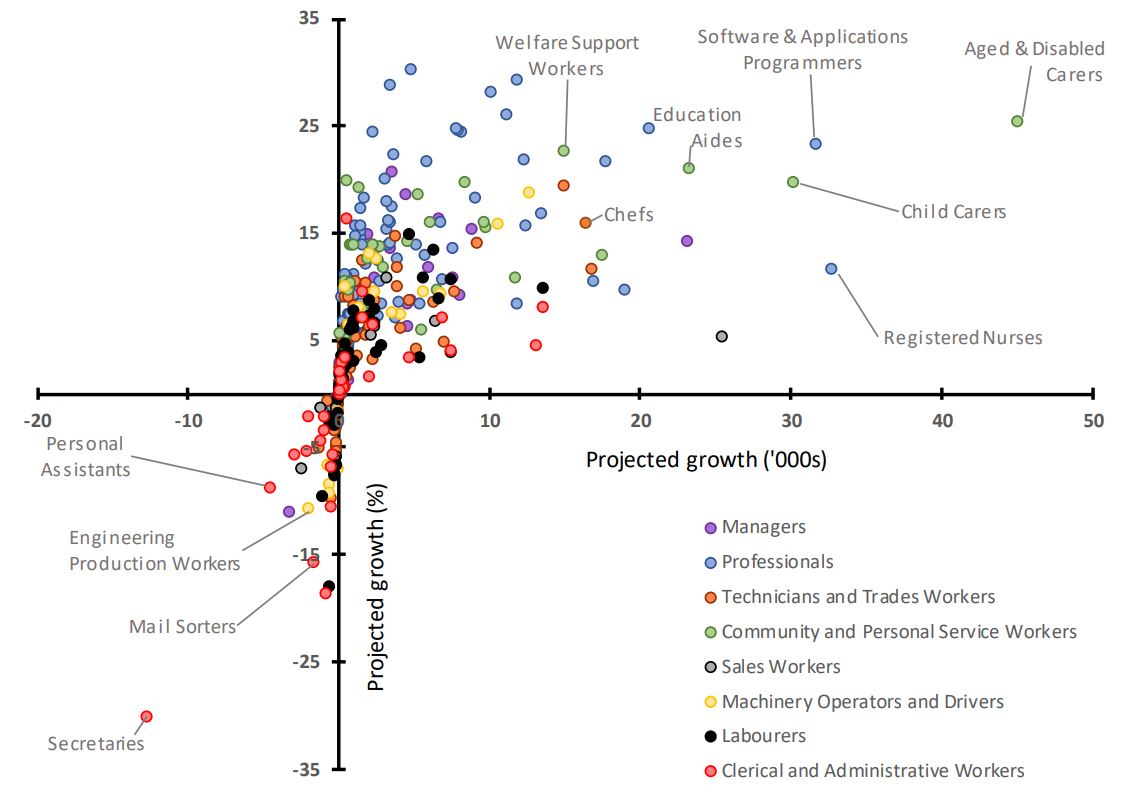Let’s address the elephant in the room: our sector – the not for profit sector – generally pays its employees less than other sectors. Even the Australian Tax Office knows it, which is why salary packaging exists, but we’ll talk more about that later.
The reasons behind this reflect our philanthropy: rather than making a straightforward profit that pays for above-award wages, we focus our energy on raising and directing revenue into the communities we serve.
But it’s important to note that there are systemic issues and external factors that inhibit our ability to support higher wages. We don’t provide lower salaries to our staff by choice.
For example, let’s look at not for profits operating in the NDIS space. With the pricing guidelines limiting what can be charged for service delivery, organisations are left with very little room to move with regard to salaries. In fact, according to the NDS State of the Disability Sector Report 2020, 31% of surveyed organisations will break-even or make a loss. Similarly, the StewartBrown Aged Care Financial Performance Survey from September 2020 reports that 52% of aged care homes reported an operating loss for the three months prior, while 65% of rural and regional residential aged care homes reported an operating loss.
It makes sense then, that our organisations can struggle to attract staff. Candidates are turning in resumes for better paying jobs, and your staff retention rate can suffer when there are higher wages on offer elsewhere. Unfortunately, this compounds to create a personnel shortage for our sector – and by extension, less people-power to drive our impact.
The workforce situation only grows more dire when you look at the forecasted demand for disability and aged care workers. The below chart from the Employment Outlook to May 2024 report by the Department of Employment, Skills, Small and Family Business demonstrates the level of growth expected. This can be attributed to Australia’s ageing population, the NDIS rollout, and an increased demand for childcare services.

Here is a more detailed breakdown of the data on additional workers required: Other Social Assistance Services (56,900 or 20.0 per cent), Allied Health Services (up by 35,700 or 16.6 per cent), Hospitals (up by 61,000 or 13.4 per cent), Residential Care Services (30,100 or 11.6 per cent), Medical Services (33,600 or 16.9 per cent) and Child Care Services (18,600 or 12.6 per cent).
The expected growth is exponential compared to other industries. Of course, this throws an additional curveball at the sector: we need to attract enough staff so we can scale to meet this increasing demand.
So, what can we do about this? How can we sweeten the deal to attract and retain good people?
One option is salary packaging. This ATO incentive allows an employee of a Health Promotion Charity (HPC) or Public Benevolent Institution (PBI) to reduce income tax and take home a higher percentage of their salary. If you are unsure whether your organisation is currently a HPC or PBI, or if it is eligible to register as one, you can check the criteria and the application process here.
It doesn’t cost the employer: the extra money comes from the employee’s taxable income. The resulting take-home pay increase is anywhere from 6% to 12%. As you can imagine, this can make a huge difference to the financial security of staff at all levels, but especially those in lower paid roles such as frontline staff. These are the people who work hard to improve the lives of others, so it follows that the more satisfied they are, the better standard of service they will provide to your clients. You can read more about CBB’s salary packaging service and how it works here.
Being so aware of the workforce challenges facing our sector, we’re really interested in measuring the role that our salary packaging service plays in staff attraction and retention. So, in our 2020 annual customer survey, we asked all of our salary packaging customers about the impact of salary packaging on their careers.
81% said that the availability of salary packaging influenced their decision to accept their current role. And 85% of respondents said that their salary packaging influences their decision to stay with their current employer. In fact, when asked about the difference that salary packaging makes to their financial position, job, or life in general, one customer said, “It keeps me in the same job for 22 years, (so it) helps significantly.”
We can see that, for an organisation seeking to boost its staff attraction and retention, salary packaging can be a powerful tool.
If your organisation is not eligible for salary packaging, or you suspect your staffing challenges stem from an internal barrier, a remuneration review is another option. Our advisors conduct a comprehensive review of your organisational structure, position descriptions, and salaries; these are then compared to available market data on salaries, including equivalent roles in the sector. Importantly, we also reference data on salary expectations amongst members of the workforce to assess your competitiveness as an employer. Our findings go into a report for your leadership and board to help them make better informed decisions about future workforce strategy.






